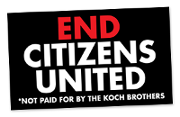Biblio
Filters: First Letter Of Last Name is G [Clear All Filters]
(1997). The Alchemy of Fear, How to Break the Corporate Trance and Create Your Company's Successful Future.
"One would expect that, when a group of bright people come together to make a decision or analyze a problem, their combined abilities would result in a group intelligence greater than that of any individual. Instead, most groups experience exactly the opposite—inverse intelligence. The resulting group intelligence is significantly less than that of any individual of the individuals within it." (p. 80)
(1989). Before It's Too Late: Employee Involvement, an idea whose time has come.
"When I started working in employee involvement I was completely unaware of the psychological implications. But then we began to observe behavior changes of the workers, and began to hear comments from their friends and spouses. We were experiencing a dramatic and powerful change that extended beyond the confines of the workplace. We were dealing with a concept that was affecting the whole person.
It was then, and only then, that we realized how tragic it is when a management system doesn't understand the need for recognition, for self-actualization, and job enrichment...and doesn't understand that how we treat people will largely determine how they respond and perform." (p. 85)
It was then, and only then, that we realized how tragic it is when a management system doesn't understand the need for recognition, for self-actualization, and job enrichment...and doesn't understand that how we treat people will largely determine how they respond and perform." (p. 85)
(2005). The Big Moo: stop trying to be perfect and start being remarkable.
"Remarkable artists are always trying to find ways to put their own signatures on their work. They try to tell their own story. They simply can't perform like everyone else. The message: Be like an artist. Better still, be an artist." (p. 71)
(1999). Breakthrough Inc. : High Growth Strategies for Entreneurial Organizations.
"Conversation is the most powerful peacetime business and organizational tool ever devised....While others stress the word communication, to us the word conversation is the better approach for two reasons. First, communication, as the word is normally used in everyday life, is usually one-sided. Second, conversation implies an exchange of views, or as Julio Olalla says, 'a changing together'. Third, communication focuses on the act of getting an already designed and known message out, while conversation implies two or more people jointly seeking some knowledge, truth, or strategy that they individually have not figured out entirely." (p. 153)
(2004). The Brothers Karamazov.
(1993). The Creative Spirit.
"'Love is not a word people talk about easily', says Larry Wilson, 'Yet, increasingly, we're seeing that people are wanting to know that somebody cares about them, that they are not just seen as some interchangeable part. Real leadership is about demonstrating that your intention is to care for people and support their growth.'" (p. 139)
(1986). The Dance of Anger.
"In using our anger as a guide to determining our innermost needs, values, and priorities, we should not be distressed if we discover just how unclear we are. If we feel chronically angry or bitter in an important relationship, this is a signal that too much of the self has been compromised and we are uncertain about what new position to take or what options we have available to us. To recognize our lack of clarity is not weakness, but an opportunity, a challenge, and a strength." (p. 106)
(1996). Danny Goodman's Javascript Handbook.
(2001). DB2 Universal Database v7.1.
(1992). Depression: the evolution of powerlessness.
"There is, therefore, an archetypal fear of outsiders and also of being made an outsider. Many films and other forms of art reflect this basic fear. Furthermore, group membership is an important aspect of self-esteem and self-identity (see Abrams et al., 1990, and Chapter 7 this volume). Another interesting observation is that following loss of rank an animal (e.g., in gorillas) may take up a solitary life. Once someone has involuntarily fallen in rank (been deposed) they can be ejected from groups quite quickly. Group living, therefore, runs parallel with the need to feel part of a group, supported by a group, and hence free from potential persecution. Lone primates often find it difficult to be accepted in a group unless they can make some bid for dominance or attract allies. In humans also non-acceptance can elicit aggression, but submission/ withdrawal/ avoidance is probably more common." (p. 181)
(2002). Doing work you love: Discovering your purpose and realizing your dreams.
"Innovation requires risk and independent-minded people with self-employed attitudes.
Asking permission is giving up your power and not accepting responsibility for the outcome.
There are organizations where it may seem as though you are not allowed to do anything without a boss's permission. It may also appear as though there are unwritten rules that say you have to do things in a particular way. But look more closely..." (p.93)
Asking permission is giving up your power and not accepting responsibility for the outcome.
There are organizations where it may seem as though you are not allowed to do anything without a boss's permission. It may also appear as though there are unwritten rules that say you have to do things in a particular way. But look more closely..." (p.93)
(1995). Emotional Intelligence: Why It Can Matter More Than IQ.
"When emotionally upset, people cannot remember, attend, learn, or make decisions clearly. As one management consultant put it, 'Stress makes people stupid.'" (p. 149)
(2009). Everyday Survival: Why Smart People Do Stupid Things.
"If individual human beings can form forceful and persistent mental models, organizations or groups of people seem to be able to do so on an almost unimaginable scale. A person has secret doubts and fears. An organization has the emotional life of a reptile." (p. 93)
(1961). Excellence.
"It may help the reader to know what my own vantage point is. I am concerned with the social context in which excellence may survive or be smothered. I am concerned with the fate of excellence in our society." (p. 11)
(2000). Faster: The Acceleration of Just About Everything.
"Our idea of boredom—ennui, tedium, monotony, lassitude, mental doldrums—has been a modern invention. The word boredom barely existed even a century ago." (p. 270)
(1996). Fat and Mean: The Corporate Squeeze of Working Americans and the Myth of Managerial "Downsizing".
"Part of the problem with the emergence of the 'disposable' worker is that the potential advantages of true 'flexiblity' at work have been compromised. Employers can benefit from some leeway in how they schedule their workforce. And many employees, especially those with children, can benefit from choice and discretion in scheduling their own working time. But disposability is not flexibility. As a result of recent trends, part-time and more contingent work is becoming a sentence, not an opportunity. Workers are losing rights, choice, and benefits." (p. 246)
(1997). Firing back: power strategies for cutting the best deal when you're about to lose your job.
"...you may already be convinced that your co-workers, likable and helpful souls as they may have been during good times, are not really part of your protective, extended family. When the bad times came, many of them disappointed you. Either they weren't there for you or they weren't able to solve your problems. If they felt threatened themselves, they were running for cover. Even if they thought they were safe, they were probably showing you a side of themselves you hadn't seen before: a cold, distant, suspicious, or cruel side. But what made you think you were all part of a great big family?" (p. 207)
(C)2014 CC-BY-NC 3.0, workcreatively.org











 ]
]